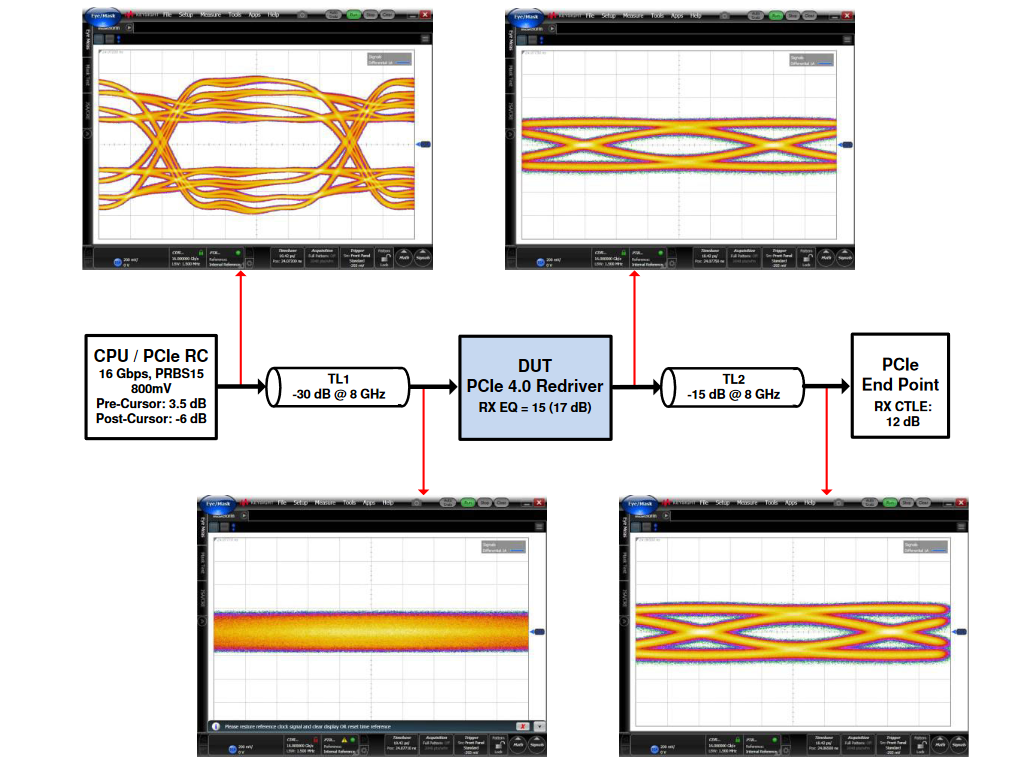SLAAE65 October 2022 DS160PR412 , DS160PR421 , TMUXHS4412
2.1 When to use a Redriver
Each component in the system contributes to the loss, like PCB trace, connectors and cables, or gain from a redriver. In PCIe Gen 4.0 applications, the specification requires Rx-Tx link training to establish and optimize signal conditioning settings at 16Gbps . Normally, PCIe-compliant TX and RX are equipped with signal-conditioning functions and can handle channel losses of up to 28 dB at 8 GHz. If the system channel loss is more than 28 db , a redriver is needed to compensate the loss. With the DS160PR421 or DS160PR412 in the link, the total channel loss between a PCIe root complex and an end-point can be extended up to 42 dB at 8 GHz.
Figure 2-1 shows an electric link that models a single channel of a PCIe link and eye diagrams measured at different locations along the link. The source that models a PCIe Transmitter sends a 16-Gbps PRBS-15 signal with P7 presets. After a transmission channel with –30 dB at 8 GHz insertion loss, the eye diagram is fully closed. The DS160PR421, with CTLE set to the maximum (17 dB boost) together with the source TX equalization compensates for the losses of the pre-channel (TL1) and opens the eye at the output of the device.
 Figure 2-1 PCIe 4.0 Link Reach Extension Using the DS160PR421
Figure 2-1 PCIe 4.0 Link Reach Extension Using the DS160PR421